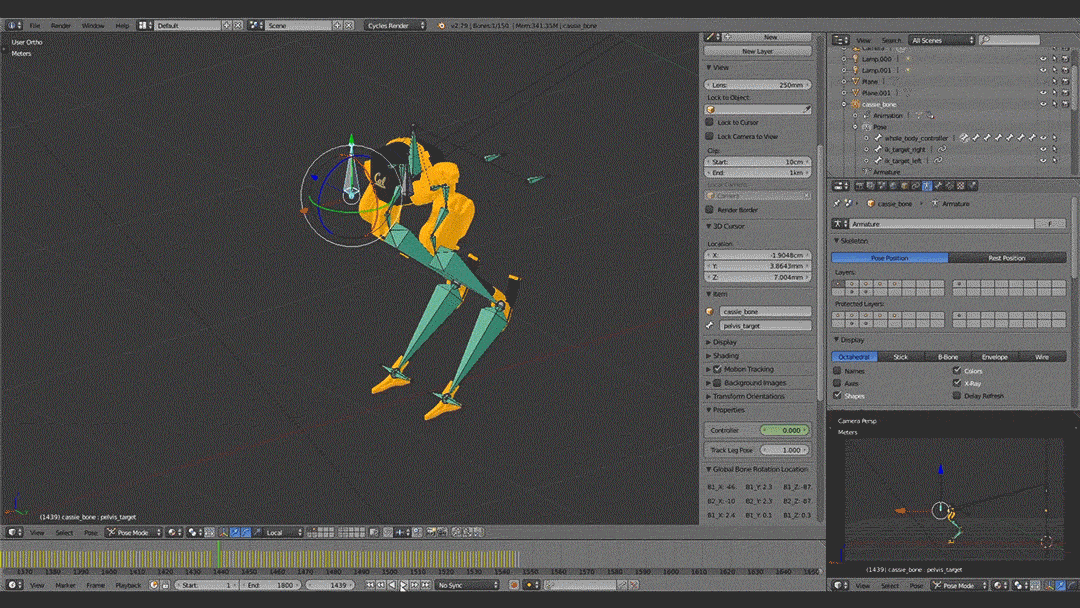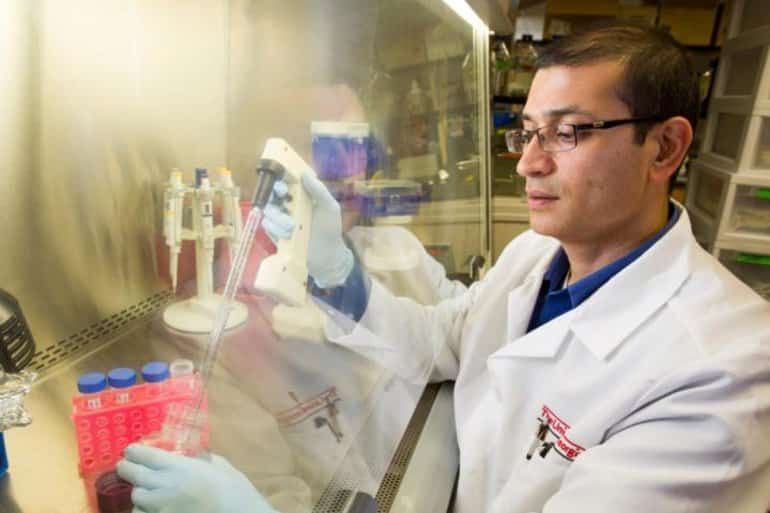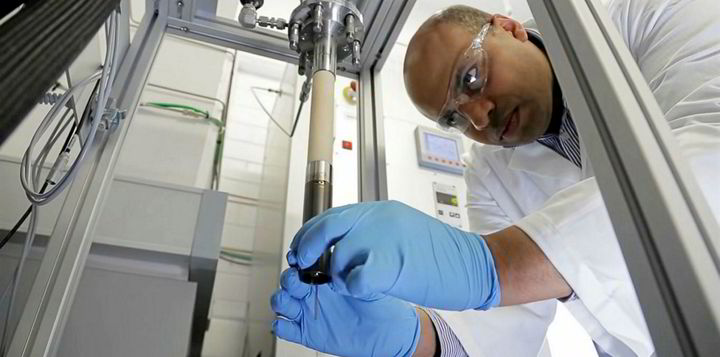Slick, viral videos from Boston Dynamics are impressive but teaching a robot to walk by itself is a lot harder.



LIVERMORE (CBS SF) — It sounds like a scene from a Hollywood sci-fi thriller, but researchers from Lawrence Livermore National lab have joined with an Air Force team of technologists to test if a nuclear blast could be used to deflect an earth-threatening asteroid.
Whether it be Bruce Willis and his crew of oil drillers taking on an asteroid as it approaches earth in ‘Armageddon’ or Tia Leoni and her father awaiting a massive tidal wave from an asteroid strike in ‘Deep Impact,’ Hollywood has been fascinated by the threat from space.

Circa 2009
(PhysOrg.com) — Scientists have managed to levitate young mice in research carried out for NASA. Levitated mice may help research on bone density loss during long exposures to low gravity, such as in space travel and missions to other planets.
The researchers worked from a number of laboratories around the U.S., including the Jet Propulsion Laboratory in Pasadena, California and the University of Missouri. The research was done on behalf of NASA, and was published in the online journal Advances in Space Research on 6 September 2009.
The scientists built a variable gravity simulator consisting of a superconducting magnet that could generate a magnetic field strong enough to levitate the water inside every cell in the mouse’s body. Water is weakly diamagnetic, which means that in the presence of a strong magnetic field the electrons in water rearrange orbit slightly, creating tiny currents in opposition to the external magnetic field. If the external magnet is strong enough, the diamagnetic repulsion of the water in the mouse tissue is enough to exactly balance the force of gravity on the body.

However, two rival teams, one in France and one in Switzerland, are now striving relentlessly towards the same goal: to create the fastest sailboat ever built.
One is headed by the former world title holder, and there are two brothers involved — but on opposing teams.
Paul Larsen is a sailing speed freak. His Vestas Sailrocket 2 boat broke the world speed sailing record for a mile in 2012: 78.26 mph! What’s he up to now?

Three years of underground robotics competitions culminate in a final event in September with $5 million in prize money.
The DARPA Subterranean Challenge Final Event is scheduled to take place at the Louisville Mega Cavern in Louisville, Kentucky, from September 21 to 23. We’ve followed SubT teams as they’ve explored their way through abandoned mines, unfinished nuclear reactors, and a variety of caves, and now everything comes together in one final course where the winner of the Systems Track will take home the $2 million first prize.
It’s a fitting reward for teams that have been solving some of the hardest problems in robotics, but winning isn’t going to be easy, and we’ll talk with SubT Program Manager Tim Chung about what we have to look forward to.
Since we haven’t talked about SubT in a little while (what with the unfortunate covid-related cancellation of the Systems Track Cave Circuit), here’s a quick refresher of where we are: the teams have made it through the Tunnel Circuit, the Urban Circuit, and a virtual version of the Cave Circuit, and some of them have been testing in caves of their own. The Final Event will include all of these environments, and the teams of robots will have 60 minutes to autonomously map the course, locating artifacts to score points. Since I’m not sure where on Earth there’s an underground location that combines tunnels and caves with urban structures, DARPA is going to have to get creative, and the location in which they’ve chosen to do that is Louisville, Kentucky.

Summary: A newly developed reparative hydrogel, which researchers are dubbing “brain glue”, protects against loss of brain tissue following a TBI and can aid in functional neural repair.
Source: University of Georgia.
At a cost of $38 billion a year, an estimated 5.3 million people are living with a permanent disability related to traumatic brain injury in the United States today, according to the Centers for Disease Control and Prevention. The physical, mental and financial toll of a TBI can be enormous, but new research from the University of Georgia provides promise.


A team of researchers at Shanghai Jiao Tong University, has found that the human hand can be used as a powerless infrared radiation (IR) source in multiple kinds of applications. In their paper published in Proceedings of the National Academy of Sciences, the group notes that the human hand naturally emits IR and they demonstrate that the radiation can be captured and used.
The human body emits light in the invisible IR range, including the hands. This source of radiation, the researchers noted, could potentially be captured and used in applications ranging from signal generation to encryption systems. They further noted that because the hand has multiple fingers, the IR that it emits could be considered to be multiplexed.
IR is a form of electromagnetic radiation —its wavelengths are longer than those of visible light, which is why humans cannot see them. Prior research has shown that the human body emits such radiation due to body heat. Electromagnetic radiation carries with it radiant energy, and its behavior is classified as both a quantum particle and a wave. Prior research has also shown that electromagnetic radiation can be used in a variety of applications, including microwaves, radios and medical imaging devices. And infrared light, in particular, enables night vision goggles, spectroscopy devices and medical devices used to treat burn victims. In this new effort, the researchers have found that the very small amount of IR emitted by the human hand is sufficient to use in various devices.

Two teams of researchers have independently found that there exists a certain type of graphene system where electrons freeze as the temperature rises. The first team, with members from Israel, the U.S. and Japan, found that placing one layer of graphene atop another and then twisting the one on top resulted in a graphene state in which the electrons would freeze as temperatures rose. And in attempting to explain what they observed, they discovered that the entropy of the near-insulating phase was approximately half of what would be expected from free-electron spins. The second team, with members from the U.S., Japan and Israel, found the same graphene system and in their investigation to understand their observations, they noted that a large magnetic moment arose in the insulator. Both teams have published their results in the journal Nature. Biao Lian with Princeton University has published a News and Views piece outlining the work by both teams in the same journal issue.
As temperatures around most substances rise, the particles they are made of are excited. This results in solids melting to liquids and liquids turning to a gas. This is explained by thermodynamics—higher temperatures lead to more entropy, which is a description of disorder. In this new effort, both teams found an exception to this rule—a graphene system in which electrons freeze as the temperature rises.
The graphene system was very simple. Both teams simply laid one sheet of graphene on top of another and then twisted the top sheet very slightly. But it had to be twisted at what they describe as the “magic angle,” describing a twist of just 1 degree. The moiré pattern that resulted led to lower velocity of the electrons in the system, which in turn led to more resistance, bringing the system close to being an insulator.

:ooo.
In a small industrial park located nearly halfway between Los Angeles and San Diego, one company is claiming to have hit a milestone in the development of a new technology for generating power from nuclear fusion.
The twenty year old fusion energy technology developer TAE Technologies said its reactors could be operating at commercial scale by the end of the decade, thanks to its newfound ability to produce stable plasma at temperatures over 50 million degrees (nearly twice as hot as the sun),.
The promise of fusion energy, a near limitless energy source with few emissions and no carbon footprint, has been ten years out for the nearly seventy years since humanity first harnessed the power of nuclear energy. But a slew of companies including TAE, General Fusion, Commonwealth Fusion Systems and a host of others across North America and around the world are making rapid advancements that look to bring the technology from the realm of science fiction into the real world.